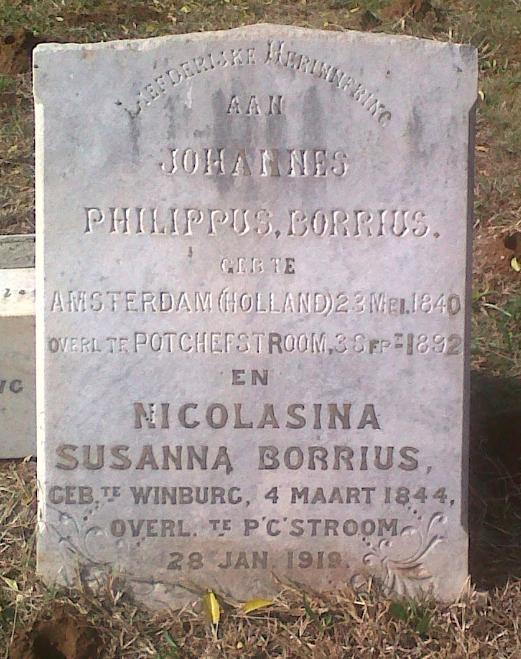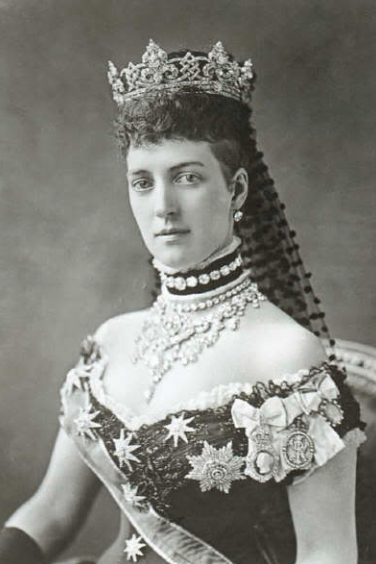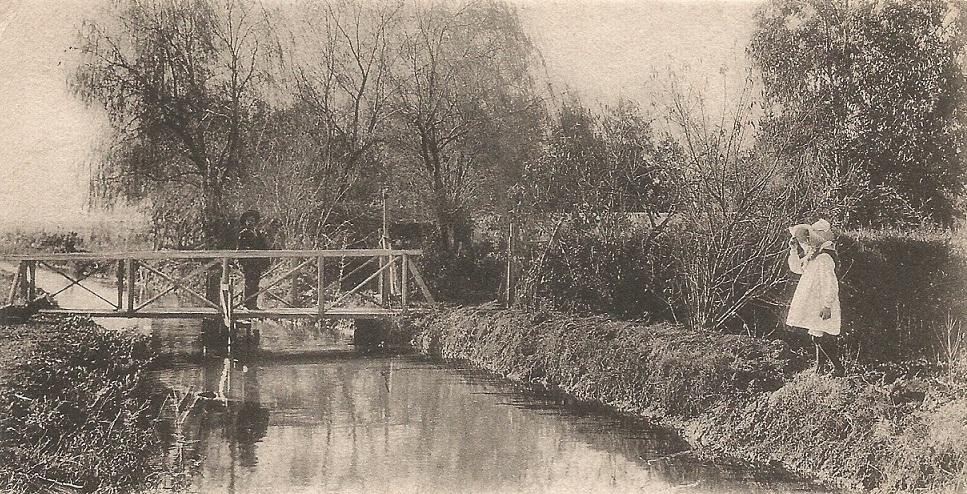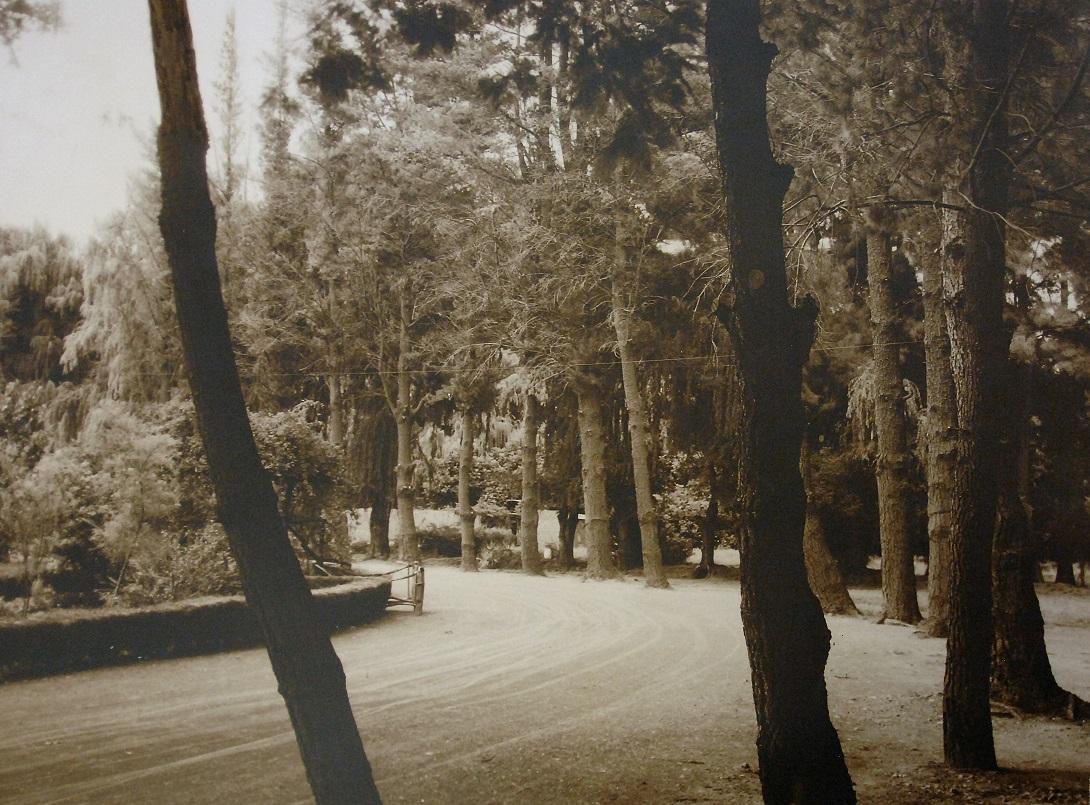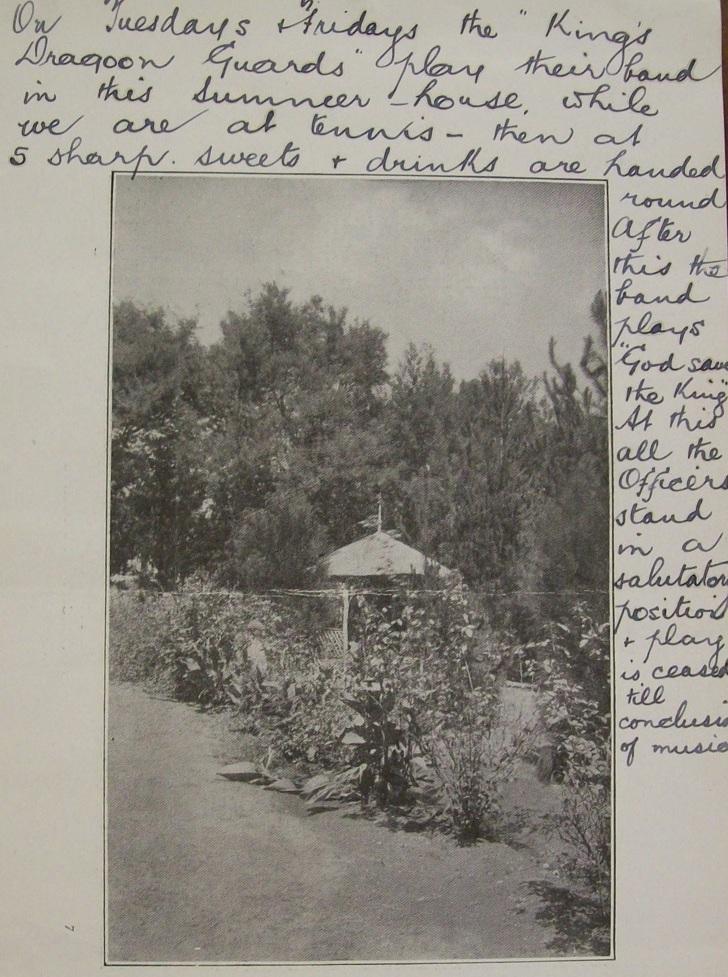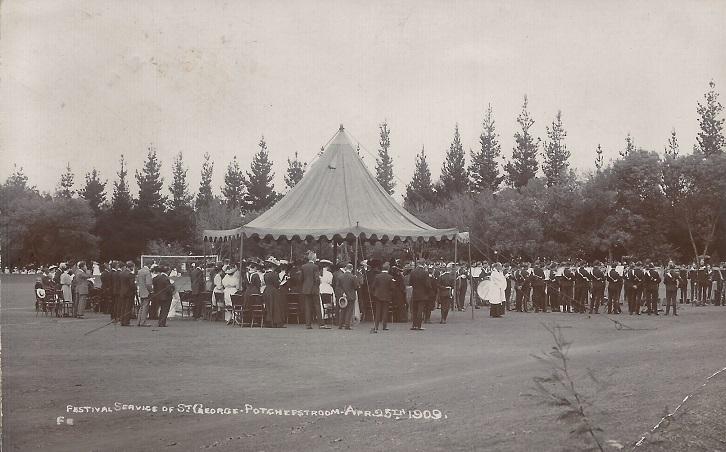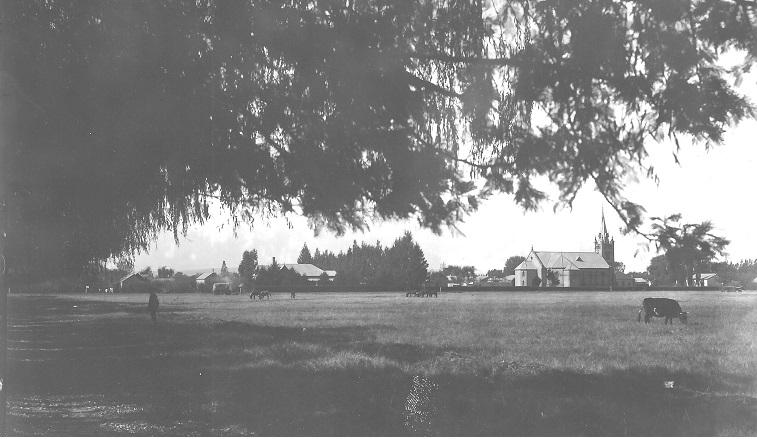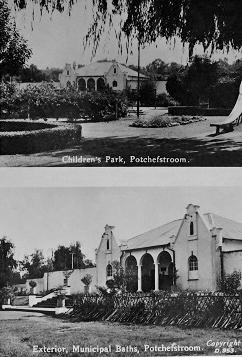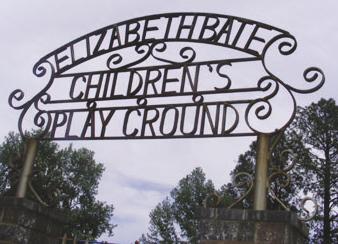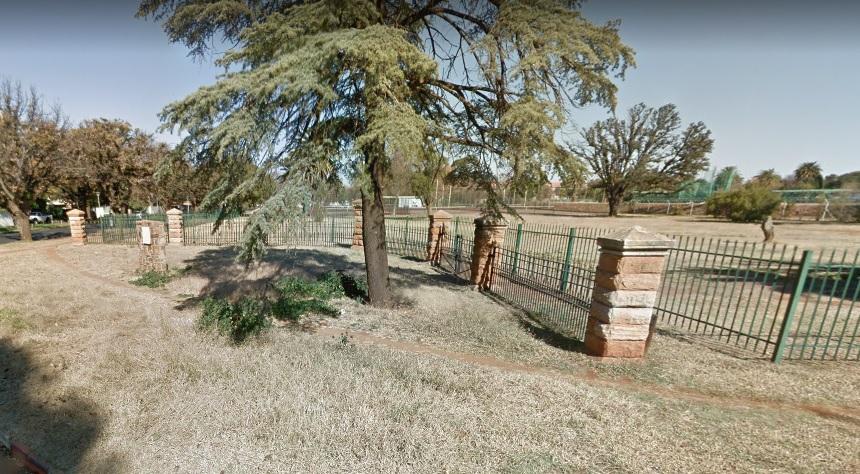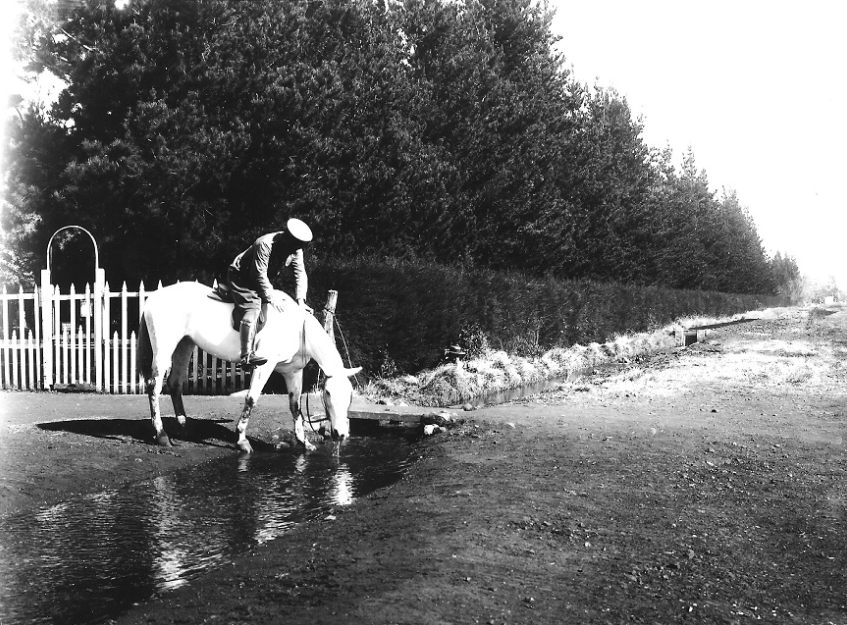
Disclaimer: Any views expressed by individuals and organisations are their own and do not in any way represent the views of The Heritage Portal. If you find any mistakes or historical inaccuracies, please contact the editor.
The article belows reveals the story behind one of Potchefstroom's historic parks. The piece first appeared on Lennie Gouws's website where she writes about the rich history of Potchefstroom. Click here for more great stories.
“A delightful resort... very popular with residents and visitors. There are shaded walks, arbours, a rosary and well-cultivated gardens, an added charm being the large furrow which passes through.” This is how a brochure to promote Potchefstroom described the park in 1913, then known as Alexandra Park.
Residents of Potchefstroom will not find this beautiful idyllic park today. The area is still known as “The Park” but the main attractions are the Kenneth McArthur Athletic Stadium and Olën Park, headquarters of Leopards Rugby. The beautiful tree lanes made way for two more rugby fields of the Potchefstroom Dorp Rugby Club and all that is left of the water furrow are bridge railings that seem to be quite out of place, since the water furrow had been filled up for half a century.
When Potchefstroom was laid out, Berg Street (later Van Riebeeck and now Peter Mokaba) was the western boundary of the town. By 1863 Kruger Street (now Beyers Naudé) was depicted on a map made by Fred Jeppe, as the western boundary.
The park was laid out west of Kruger Street. Currently Lombard (now James Moroka) and Piet Bosman Streets are the borders, with the ornamental entrance (which has not been used for decades) in Kruger Street. The southern boundary is the Piet Malan Bridge on the N12. The south-eastern corner of that block was taken up by the outspan (or camping ground) of the Dutch Reformed Church, later known as Lindley Square. In the early 2000s a large block of flats was erected on the former Lindley Square and the rest of the area is taken up by the Second Life Goods Store, which opened on 1 April 2019 and is housed in the GD Worst Hall of the Dutch Reformed Church. The corner stone of the Worst Hall was laid on 21 November 1953.
Cemetery was first
The first human activity in this area started before the park was laid out. In 1861 the cemetery that is now known as the Park Cemetery received its first burials. The cemetery is situated on the south-western corner of the area described. The tombstone indicating the earliest death is that of Ellen Donahue, who passed away in 1844. According to her tombstone she died at Fort Ledde in the Cape Colony and it is widely accepted that she was later re-buried here.
This cemetery served the town until June 1903 when the Potchefstroom Cemetery, which is now in Potchindustria, was opened. Mrs Anna Tom, however, who passed away in 1944 is interred at the Park Cemetery. Her husband, magistrate Dirk Tom, who passed away in 1915, was also buried here. The reason for their late burials here appear to be the fact that their three year old son, also Dirk, who died in 1893, was buried in the Park Cemetery.
People who died in the first concentration camp, which was situated on the later grounds of the Potchefstroom High School for Boys, were also buried here. British soldiers who died in and around Potchefstroom during the Anglo-Boer War also found a resting place here, including those who died during the Battle of Frederikstad.
Well-known residents of Potchefstroom buried here include President MW Pretorius, Rev Dirk van der Hoff and JP Borrius, one of the first printers of Potchefstroom.
The tombstone of JP Borrius and his wife
In the 1960s the cemetery was derelict and it was decided to gather tombstones in groups to turn it into a Garden of Remembrance, which would also make the maintenance of the cemetery easier. The project was completed in 1965.
Attempts to maintain the cemetery in an orderly fashion over the years were thwarted by vagrants who trashed tomb stones numerous times. The cemetery was fenced in the early 2000s, but maintenance by the Parks department stays a problem.
Horse races
The first horse races in Potchefstroom took place in 1866. By 1869 a race course was established where the Olën Park Stadium is today. This is according to DJP Haasbroek who wrote a master’s dissertation in 1955 on the history of Potchefstroom.
Haasbroek further wrote that residents of Potchefstroom experienced a need for a park. In 1869 the “Landbouw Vereniging” applied to the municipality for a place where botanical gardens and a park could be laid out. In the request it is noted: “Potchefstroom is lamentably deficient in public walks and drives, there being absolutely none.” In 1880 the municipality requested financial support from the government to execute their plans for the park. It was initially suggested that the botanical gardens be laid out across from residence of President MW Pretorius, currently the President Pretorius Museum.
The Park was, however, eventually laid out in 1892 in its current place.
It appears that an agricultural hall was built on the grounds. Rose Scorgie (1881-1974) recalled in her memoirs an incident involving this hall:
This brings to mind an incident in connection with my brother Gilbert. As one of a group boys playing in the Park they found a lower window unlatched in the Agricultural Hall and, boys, being boys, could not resist the temptation to push it up and climb inside. Unfortunately for Gilbert when climbing out the heavy window fell down and broke one of his legs. Taking it in turns the other boys carried him chair fashion on the homeward way. Passing Mrs Coulson’s house she saw the procession and inquired about the matter. Very sensibly, and out of the kindness of her heart, she insisted (despite his strenuous objections) that he be lifted into Ernest’s perambulator and therein be transported the rest of the way. Evidently for a boy of nine or ten to be wheeled in a pram was a great indignity and such a humiliation that not even time smoothed out the dent in his vanity. This we discovered when, in his mature years, we teased him about the incident and he looked annoyed.
The Scorgie residence stood in Retief Street and was later demolished to lengthen Luke Street to connect with Retief Street.
After the Anglo-Boer War the Park came to be known as Alexandra Park, named in honour of the British Queen Alexandra, who was the wife of King Edward VII. He became king after the death of his mother, Queen Victoria, in 1901. The name later fell in disuse.
Alexandra Park was named after Queen Alexandra (1844-1925) who was Queen of the United Kingdoms, the British dominions and Empress of India until her husband died in 1910. (Wikipedia)
A booklet, published in 1904, promoting Potchefstroom as a golfing destination, waxed lyrical about the park and mentioned that it might be said that it had one of the most thickly wooded parks in the country.
Once amongst the tall trees, one does not wish for modern additions, the eye is always better pleased with nature unadorned and a scent laden atmosphere often does more toward raising the mind above mundane reflection than the most beautiful works of man.
On early mornings the ‘Fir Grove’ next to the main entrance is much appreciated by visitors who delight to make themselves comfortable beneath the spreading branches of these tall, odorous trees, to inhale the pure air to scent the delightful perfumes and to give an undivided ear to the music of the many brightly jacketed birds which then frequent the particular spot.
There is the broad canal which passes through the Park and on whose banks grow many flowers and a great variety of elegant and graceful trees.
This charming postcard depicts the furrow in the Park. This postcard is from the Gawie van der Walt Postcard Collection.
The 1904 booklet also mentioned all the various sporting activities in the Park such as “association football” (what we know today as soccer), hockey, croquet, tennis, cricket, cycling and rugby. These sporting activities will be discussed in a further article.
One of the lanes in the Alexandra Park. (Potchefstroom Museum)
Hub for celebrations
Especially in its early years the Park was the social hub of Potchefstroom. During the first decade of the 20th century many British soldiers were stationed in Potchefstroom bringing with them military bands.
Shortly before CV Bate passed away in 1961 Tom McDonald conducted an interview with Bate, former owner of the Herald, and Bate remarked: “Those were the days when massed army bands played in the park at free promenade concerts. “And what do you think? Some of the councillors objected that the council should pay for refreshments of the musicians.”
This page came from a booklet with photos of Potchefstroom, published in the early 1900s. These booklets were bought, notes added and then send to family and friends far away. This one is dated 1904. It is in the collection of the Potchefstroom Museum.
As indicated in the caption this photograph was taken during the St George’s festival celebrations on 25 April 1909. St George’s day is celebrated on or near 23 April. The legend of Saint George, the patron saint of England, and the Dragon describes the saint taming and slaying a dragon that demanded human sacrifices. 23 April is the anniversary of his death in 303 AD. St George has captivated British imaginations since the Crusades and the Hundred Years’ War. (Gawie van der Walt Postcard Collection)
Over the years the park was the scene of many celebrations. In 1910 Potchefstroom celebrated Union Day with a variety of events. Jenkins wrote that the festivities were concluded with a promenade concert in Alexandra Park, where a large crowd assembled.
At 8pm the mayor applied a light to a bonfire which had been erected on the Dutch Reformed Church outspan and the huge blaze lit the surrounding countryside. Rockets and other fireworks were exploded and this magnificent bonfire appropriately concluded Potchefstroom’s Union Day Celebrations.
This bucolic photo by August D’Ange D’Astre shows the outspan or campground of the Dutch Reformed Church, also known as Lindley Square. The back of the church can be seen at the far side of the square.
Princely visit
In 1925 the Prince of Wales visited Potchefstroom during his extensive tour of Southern Africa. Although he visited Potchefstroom for one day only on 22 June, discussions to plan the programme of the day took up much time during town council meetings in the months ahead of the visit. The Herald reported that the matter of where the children of the town were to meet the prince was “discussed in full”.
This was resolved and on 9 June it is reported that it should be in the Park. Many years later one of those children remembered the day. The then Prof Fritz Potgieter said that all the schools in the town and district were closed for the day and even the children from the farm schools were taken to town. All were provided with small Union Jack flags to wave at the prince as he passes. (This was before South Africa had its own flag.)
We farm children yelled ourselves hoarse only to later realise that the man who stood at the back of the open car with his red robe and pirate’s hat, who was the “target” of our yelling was not the prince, but the mayor of Potchefstroom! The prince was the drab one next to him which we did not even notice.
Later reports said that the prince was dressed in “mufti” which is described as plain or ordinary clothes and is mostly referred to when the person wearing it usually dresses in formal clothes or military uniform.
Swimming bath opened in splendid weather
After being discussed for fifteen years, the town council only approved the building of the baths on the grounds of the Park in 1929. This is according to Jenkins in A Century of History. He wrote: "The Potchefstroom Municipal Swimming Bath was opened in splendid weather and in the presence of a large gathering on Wednesday, October 15, 1930 by the mayor, Mr WB Barnard."
After the speeches people were given free access to the bath “which was taken full advantage of.” The building costs amounted to £5 000.
The entrance to the swimming bath (bottom) and the playground (top) as it appeared in the 1930s. (Potchefstroom Museum)
Playground gifted by grieving widower
To honour his late wife Elizabeth Bate, the founder of the Potchefstroom Herald, Charles Veale Bate, donated a children’s playground that was laid out in the Park in front of the swimming baths. It was officially opened by the mayor of Potchefstroom at a large gathering on 15 March 1933. Jenkins described the playground: “The playground is artistically laid out with gardens and a fountain, as well as various swings and roundabouts and relieves what otherwise would have been a barren waste in front of the bath.” Elizabeth Jane Bate passed away in October 1929 at the age of 53.
The ornate entrance to the playground still exists
Lifeblood of the Park stopped
The abundant trees, shrubs and flowers in the Park was made possible by water from the main town furrow flowing through the park.
Although the Park experienced its heyday in the first decade of the 20th century, the gradual emphasis from gardens and social meeting place to sporting hub happened over the years. The final nail in the coffin of the gardens of the Park came in 1972 when it was decided to end the supply of water by way of the town furrow.
In spite of stiff opposition, the town council decided to stop the water on 1 October 1972. The town furrow was filled up and only small reminders to this day indicate where it was. One of those is bridge railings in the Park seemingly in the middle of nowhere. On the grounds of the Potchefstroom High School for Girls a row of trees indicate where the furrow flowed. In Smit Street next to Girls High more bridge railings indicate where the furrow was. The park next to Dyer Street (from Smit to Chris Hani) was made where the furrow previously flowed.
All that is left to indicate the grand space it once was, is the entrance to the Park on the south-western corner of Kruger and Lombard Streets (Beyers Naudé and James Moroka). The sporting activities, however, still flourish at the Park and will be discussed in another article.
The grand former entrance to the Park. The stone pillar to the left of the tree was built after 1975, when the historic Oak Avenue was declared a National Monument. On it was affixed a bronze plaque with information on the Oak Avenue. The bronze plaque was stolen in 2009 and replaced with a sign board which has since been damaged by the sun so that it is illegible. The stone pillar was built using stones from the North Bridge which was demolished in the 1960s to make way for the four-lane road which is there today. (Google Streetview)
I wrote this article after receiving a phone call from Bruce Eitzen. He is a landscape architect from Fish Hoek in the Cape and manages the Facebook page “Landscape History and Heritage of Southern Africa.” He asked me to write an article on the parks and green spaces in Potchefstroom. Alexandra Park, now mostly known as The Park, is the oldest.
Main image: This enchanting photograph by August D’Ange D’Astre was taken probably at the entrance to the Park. The horse is drinking from one of the furrows running from the main furrow to town.
About the author: Somewhere in her late teens Lennie realised that writing came easy to her and now, many decades later, she has written and co-written nine books on various aspects of the history of Potchefstroom. This is apart from various supplements and numerous articles, mostly published in the Potchefstroom Herald. Three of her books are available on amazon.com. One is a biography on Kenneth McArthur, Olympic gold medallist in the marathon of 1912. The other two are Afrikaans Christian novels. The supplement on the history of the Herald, at the time of its centenary in 2008, led to a Master’s degree in Communication Studies and one of the books, on NWU PUK Arts, led to a PhD in history. In the process of all this writing she has accumulated a large stash of information and photos on the history of Potchefstroom.
Comments will load below. If for any reason none appear click here for some troubleshooting tips. If you would like to post a comment and need instructions click here.

